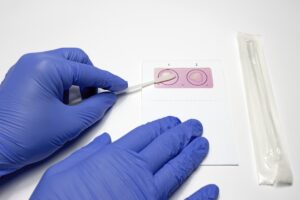The War Against Cancer:
The narrative of the war on cancer (war against cancer) often paints a picture of a modern, high-tech battleground. Nevertheless, the Pap test, which would appear to be a relatively straightforward medical advancement, was the seed that planted the seeds for this vital dispute many decades ago. A turning milestone in women’s health and a blueprint for the larger fight against cancer, this modest treatment marked the beginning of organized cancer prevention. It was also a turning point in the struggle against cancer.
A Silent Epi demic
demic
Women were terrified of the possibility of developing cervical cancer before to the middle of the 20th century. It was common for a diagnosis to be a sentence of death. It was unknown what caused the condition, and there were few treatment options available that were ineffectual. The disease was cloaked in mystery. It was a silent epidemic that took the lives of countless people without any prior warning.
The Groundbreaking Contributions Made by George Papanicolaou
It was in this desolate environment that the work of George Papanicolaou, a physician of Greek and American descent, started to shed light on something that could lead to progress. It was during his research on the reproductive system of women that he made a discovery that would go on to change the course of history: the presence of aberrant cells in cervical smears. As a result of his fascination with this discovery, he committed himself to the process of improving his methodology and inventing a procedure that improved the precision with which precancerous and cancerous cells could be identified.
The Pap test, which is a process that involves the collection and microscopic inspection of cells from the cervix, was the pinnacle of his study. Women’s healthcare would undergo a sea change as a result of this seemingly straightforward breakthrough for the war against cancer.
Changes That Will Revolutionise Women’s Health
One of the most significant turning points in the history of medicine was the advent of the Pap test. Early detection of cervical cancer, when the disease was most amenable to treatment, was made possible for the very first time. The ramifications were quite significant. Women who had been given a bleak prognosis in the past now had a possibility of surviving her condition.
In addition to affecting survival rates, the Pap test had a significant impact. In doing so, it provided women with the ability to take charge of their own health and empowerment. The focus shifted from therapy to early identification and prevention, which was a significant step in the development of a new era of preventive medicine in war against cancer.
A Planatic Approach to the Prevention of Cancer
The fact that the Pap test was successful serves as a reliable demonstration of the concept. Through this study, it was proved that early detection of cancer could drastically reduce mortality rates. A broader push for cancer screening and prevention was sparked as a result of this realisation.
A number of alternative cancer screening procedures were created by researchers after the Pap test served as an inspiration. In the fight against these fatal diseases, mammography for breast cancer, colonoscopy for colorectal cancer, and PSA testing for prostate cancer have emerged as essential tools. Mammography allows for the detection of breast cancer in war against cancer.
Opportunities and Obstacles to Overcome
Even while the Pap test and subsequent developments in screening have helped save a great number of lives, there are still obstacles to overcome. Existing disparities in access to screening services continue to exist, with women living in communities that are underserved being at a greater risk. In addition, the fact that the landscape of cancer is constantly shifting necessitates ongoing research and innovation.
Testing for human papillomavirus (HPV) and liquid-based cytology are two examples of recent technological advancements that have increased the accuracy and efficiency of cervical cancer screening. On the other hand, efforts to develop even more effective preventative measures, such as vaccines and tailored medicines, are still ongoing.
Conclusion: An Inheritance of Hope
A demonstration of the strength of human invention and the unrelenting pursuit of greater health, the Pap test is a monument to both of these things. This serves as a timely reminder that advancements may be made in the war against cancer, and that early identification is an essential component of making cancer prevention efforts more effective.
When we consider the future, it is imperative that we continue to build upon the legacy of the Pap test. It is possible for us to get closer to a future free of cancer if we make investments in research, broaden access to screening, and raise awareness about the significance of preventative care.




